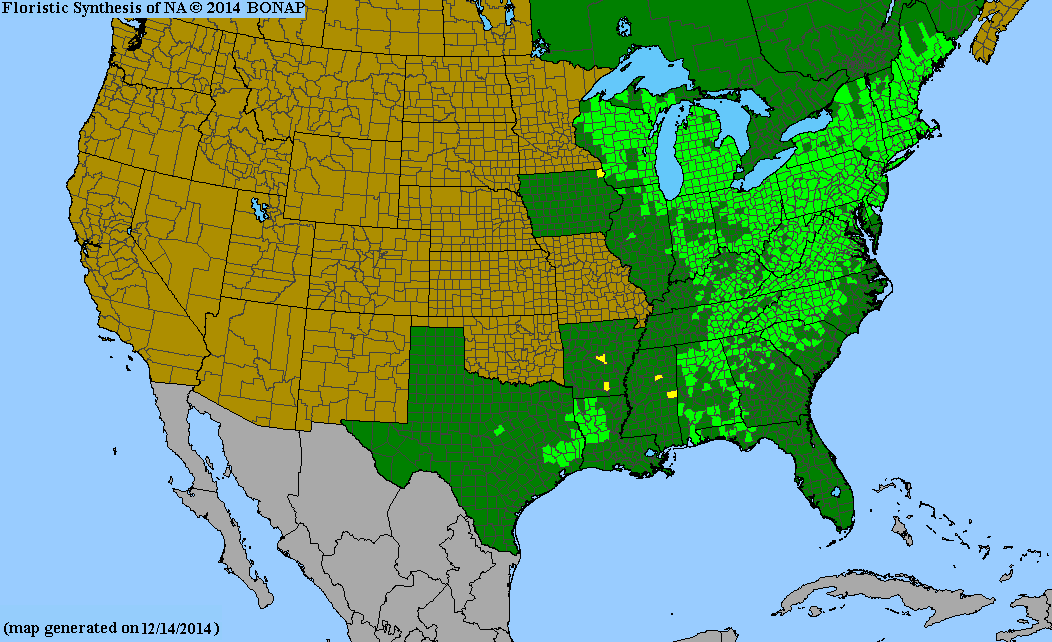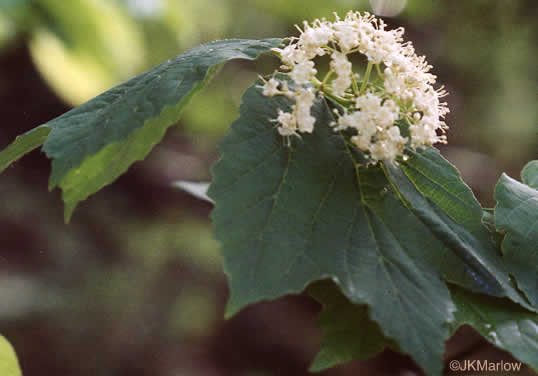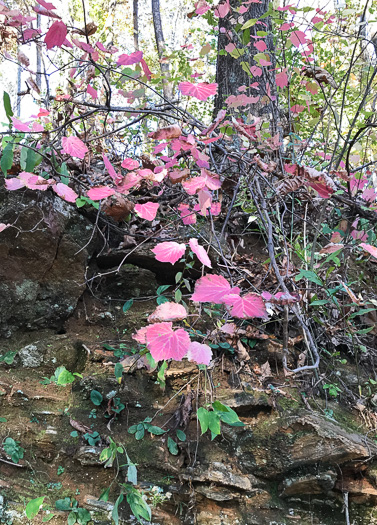Viburnaceae
mapleleaf viburnum
Viburnum acerifolium
Synonyms
Viburnum acerifolium f. collinsii
Viburnum acerifolium var. densiflorum
Viburnum acerifolium f. glabrescens
Viburnum acerifolium var. glabrescens
Viburnum acerifolium f. ovatum
Viburnum densiflorum
Viburnum involucratum
Plant Type
Shrub (less than 10 ft)
Life Cycle
Perennial
Typical Size
4-6 ft. tall
2-6 ft. wide
Tolerant of
Drought
Inolerant of
Direct Afternoon Sun
Propagation
By seed, By cutting
Plant Propagation Notes
Seeds should be collected when mature and stored at 41 degrees F with the pulp on.
Plant Planting Notes
Provide 6′ spacing.
Plants/Diseases
No significant disease or pest issues.
Wildlife Benefits
Nectar/pollen source for pollinating insects, Host plant for butterfly larvae, Fruit/seeds for birds
Leaves
Leaves opposite, three lobed with dentate margins.
Flowers
Small white flowers with 4-5 petals in clusters on a panicle.
Fruit
Berries that develop in the late summer early fall, turning black-blue.
Bark
Dark gray and slightly rough.
Toxicity
No known toxicity.

USDA Hardiness Zones
4, 5, 6, 7, 8
Light Exposure
Part Sun/Shade, Full Shade
Soil Moisture
Medium
Soil Drainage
Well-drained
Soil pH
Acidic (less than 6.0)
Native in South Carolina?
Yes
Plant Native Habitat
Mesic to dry forests and woodlands.
Global Conservation Status (NatureServe)
Secure (G5)
Federal Conservation Status (USFWS)
Not Listed
Distribution Notes
Common in the Mountains and Piedmont. Uncommon in the Coastal Plain.


